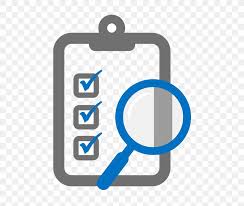15 Strategies for Building a Strong Online Reputation Management Strategy
In today's digital age, the online reputation of businesses and individuals holds immense importance. A strong online reputation management (ORM) strategy is crucial for safeguarding your brand image, attracting customers, and boosting credibility. To help you build a robust ORM strategy, here are 15 practical strategies with real-world examples and professional advice:
- Monitor Online Mentions 🕵️♂️: Regularly monitor social media platforms, review sites, and search engines to identify any mentions of your brand. Tools like Google Alerts and Mention can automate this process.
Example: A boutique hotel diligently tracks online mentions to address any negative reviews promptly, ensuring customer satisfaction, and maintaining a positive reputation.
- Engage with Your Audience 💬: Engaging with your audience on social media and other online channels shows your commitment to customer satisfaction. Respond to comments, address queries, and acknowledge positive feedback promptly.
Example: A fitness influencer consistently interacts with followers, answering their workout-related questions, and offering advice, building a loyal and engaged community.
- Encourage Positive Reviews ⭐️: Ask satisfied customers to leave reviews on trusted platforms like Google My Business or Yelp. Positive reviews enhance your online reputation and attract potential customers.
Example: A local restaurant offers incentives, such as discounts or free desserts, to encourage customers to leave positive reviews, strengthening their online reputation.
- Respond to Negative Feedback 🤝: Address negative comments or reviews in a professional and empathetic manner. Demonstrate your willingness to resolve issues and ensure customer satisfaction.
Example: An e-commerce store promptly responds to negative feedback, offering refunds or replacements to dissatisfied customers, turning their negative experience into a positive one.
- Showcase Testimonials 📣: Displaying positive testimonials from satisfied customers on your website or social media profiles adds credibility. Prospective customers are more likely to trust your brand when they see real-life success stories.
Example: A graphic design agency highlights testimonials from clients, showcasing their expertise and reliability, and attracting new clients in the process.
- Optimize Your Website 💻: Ensure that your website is user-friendly, fast-loading, and mobile-responsive. A seamless browsing experience enhances your brand's reputation and encourages visitors to stay longer.
Example: An e-commerce store optimizes its website for mobile devices, allowing customers to browse and make purchases effortlessly, resulting in increased sales and positive reviews.
- Create Valuable Content 📝: Share informative and engaging content on your blog or website to position yourself as an industry expert. Valuable content builds trust and attracts a loyal following.
Example: A tech company regularly publishes detailed guides and tutorials, establishing themselves as a go-to resource for their target audience.
- Leverage Influencer Marketing 🌟: Collaborate with influencers in your niche to boost your brand's credibility. Their positive endorsement can expand your reach and enhance your online reputation.
Example: A fashion brand partners with popular fashion influencers to showcase their products, attracting a wider audience and increasing brand awareness.
- Proactively Address Issues 🔍: Monitor online trends and address potential issues before they escalate. By proactively resolving concerns, you demonstrate your commitment to customer satisfaction.
Example: A software company frequently updates its product based on user feedback, addressing potential bugs or performance issues promptly.
- Be Transparent and Authentic ✨: Honesty and transparency are vital for building trust. Be authentic in your online communications and admit mistakes when necessary.
Example: A food delivery service openly acknowledges any delays or mix-ups and takes immediate steps to rectify the situation, preserving their reputation for reliability.
- Build a Strong Social Media Presence 📲: Engaging with your audience on social media platforms builds brand visibility and allows you to showcase your positive reputation.
Example: An online clothing store actively shares user-generated content, creating a sense of community and fostering a positive brand image.
- Monitor Online Reviews 🌐: Regularly check and respond to reviews on platforms such as TripAdvisor or Amazon. Show appreciation to positive reviewers and address concerns in negative reviews.
Example: A travel agency actively monitors and responds to reviews on TripAdvisor, thanking satisfied customers and providing assistance to those who had a less satisfactory experience.
- Maintain Consistency Across Channels 🚀: Ensure your brand messaging and visuals are consistent across all online platforms. This consistency reinforces your brand identity and strengthens your reputation.
Example: A multinational corporation maintains a consistent brand voice and visual identity across its website, social media profiles, and other online channels, ensuring a cohesive brand experience.
- Invest in Online Advertising 💰: Well-executed online advertising campaigns can enhance your visibility and reputation. Targeted ads can reach potential customers who may not be aware of your brand.
Example: A startup uses social media ads to target a specific demographic, effectively increasing brand awareness and attracting new customers.
- Monitor Your Competitors 👀: Keep an eye on your competitors' online reputation and learn from their successes and failures. Analyze their strategies to strengthen your ORM approach.
Example: A technology company analyzes its competitors' online reputation to identify trends and areas for improvement, allowing them to stay one step ahead in the market.
By implementing these 15 strategies, you can develop a strong online reputation management strategy that will protect and enhance your brand's image. Remember, building a positive online reputation takes time, effort, and consistent dedication.





